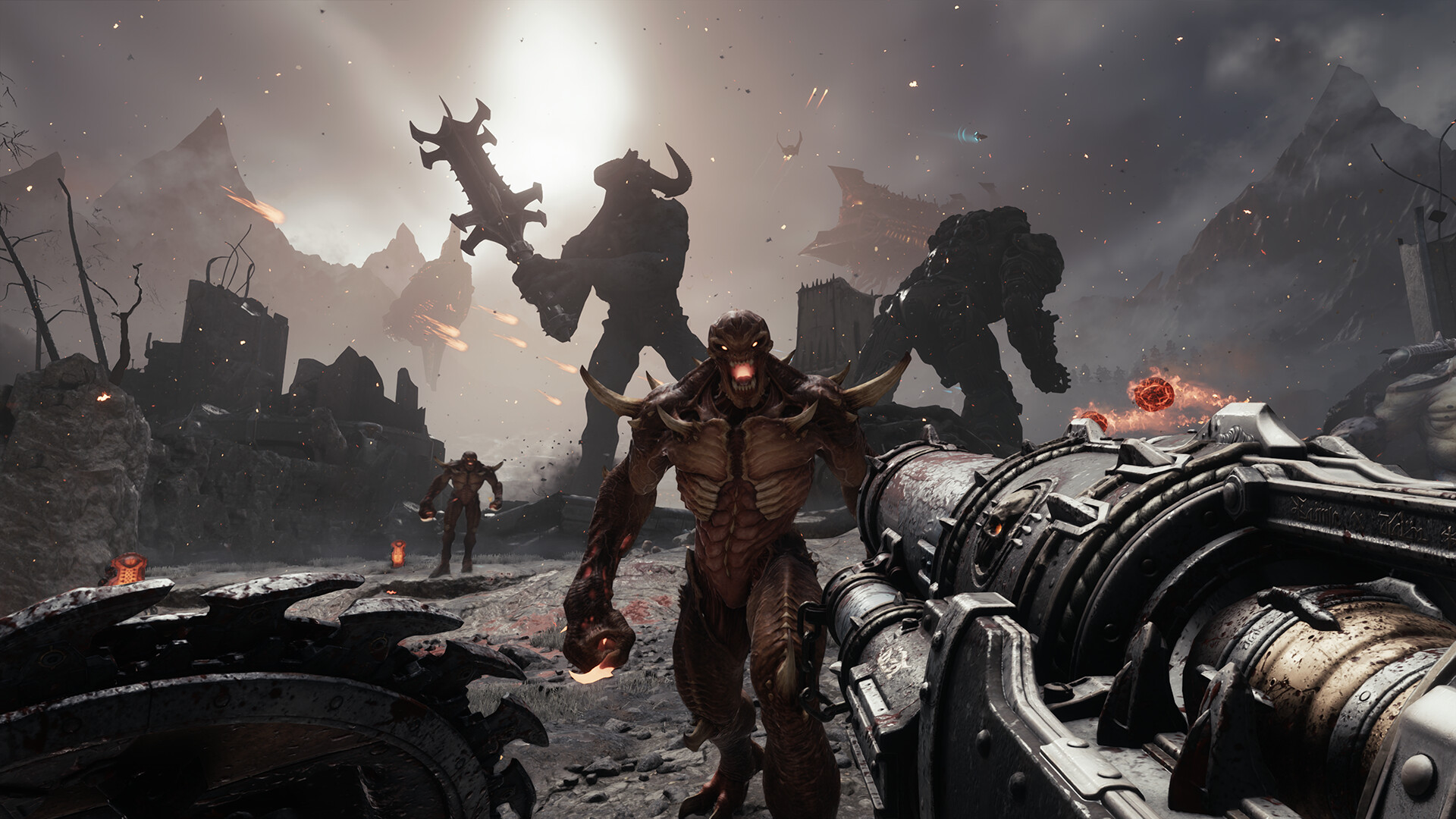Boss Fights and Pacing in Doom: The Dark Ages
Doom: The Dark Ages – Tactical Encounters Over Twitch Reflexes
These bosses do reflect this change in gameplay; rather, they are not twitchy or spammy and instead require patience and pressure. These aren't the type of battles that can be cheesed through movement exploits but rather involve intricate read-and-react processes, returning to progress further in battle. For one of the later bosses I faced, I fought against a twin-demon cavalry rider who countered with waves of flaming spear attacks needing to be parried, followed by narrow windows to attack back. It was infuriating and refreshingly honest at once. Here, outpacing your enemies isn't possible; rather, they must be systematically broken down. Done. Doom (choose any of the previous games) has never felt this heavy before, yet it wears such weight so beautifully on PlayStation 5.

Environmental Design – A Living World of Rot and Steel
Doom: The Dark Ages remains one of the most unique pieces of art I have interacted with. The amount of creativity the designers put into making cathedrals capture ‘demonic sieges’ is brilliant. My personal favorite piece from the game is where you can hear echoes in castle halls that feel inviting and expansive. The use of shots reverberating through as a “war drum” contributes to their depiction of combat grammar. As much as it is art, its design is also critically important for making you partake in shield-first battles with lock-on bashes and different quarter-close options. Rather than endless vertical stacks, we are made to fight through piles of horizontal carnage.
There’s always something happening on screen which adds layers to aesthetics because the world around us is bursting with stories waiting to be uncovered, like fractured demon skulls alongside ancient scrolls hinting at prophecies gone by telling us how time feels blurred, fully immersed in mythical mantles while treading through traces of legends.

Franchise historians hold value in explaining if Doom: The Dark Ages replaces olden days or spins them off and goes without quietly asking – why are we here? All eight reinvented themselves for Doom repeatedly remodel themselves, whether it was shifting between sprite shooter, cinematic tragedies, or sp/speedster FPS will always find respite within blanketed nights listening to wondering, intentionally mirrors focus unintentionally exposing logic left disregarded until during self-deconstructing cycles come Breakthrough Shifts happened for ages slowing down whilst recollect Slayer beyond speedy destruction person meant feelings alongside rage felt entirely separate subdivision intertwined concept extracts known fact all embraced while retold.
And the wrath of Doom is much more painful for you now. A lot has changed, including the ways in which enemies inflict pain.
The absence alone isn't a lack of detail. It's an invitation. An absence dares us to prove ourselves without the crutches. Or rather, without knowing all the mechanics given in advance.

Final Verdict – Doom Has Never Felt So Mortal or So Mighty.
Doom: The Dark Ages makes it clear that you will get punished, and they won’t go easy on you by giving out tools you have used before. But in return, something feels different, something that I haven't offered since its earliest days: Each combat feels real where death seems eminent if not handled properly rather than being a power fantasy filled with overconfidence due to previous victories.
While walking away after bruising myself and being humble. I was quite thrilled, too! The extra features this game offers do not make it easier but add challenges. One would love their dooms to be a braver anthem instead. After thirty years, it's about time they've made decisions for themselves rather than Defense Mechanisms created to win over competition should’ve been.